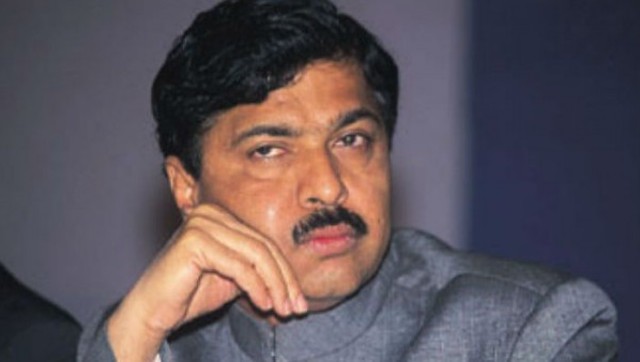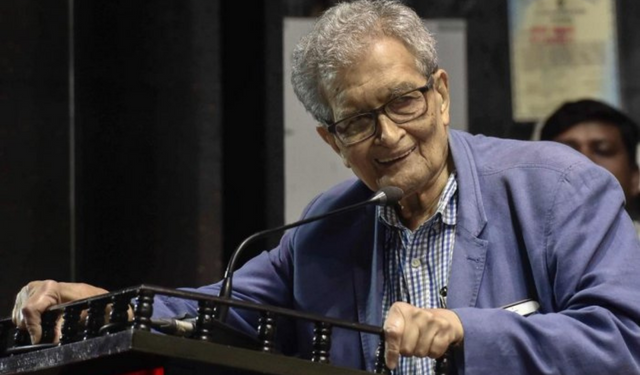Has the Narendra Modi government diabolically and massively slashed spending on the social sector and welfare schemes? Nobel laureate Amartya Sen says an emphatic yes.
Is this a misleading allegation and are the deep cuts the fallout of the award of the Fourteenth Finance Commission (FFC), which hugely increased the share of the states in the tax kitty, thus giving them more untied funds that they could use as they pleased? Yes, it is, goes the counter-argument.
Which statement is right and which is wrong? They are both partially right and partially wrong.
Let’s take up Sen’s charge. His lament is mainly about four centrally-sponsored schemes – the Mid-Day Meal programme, the Sarva Shiksha Abhiyan (SSA), the National Rural Health Mission, which is now the National Health Mission (NHM), and the Integrated Child Development Scheme (ICDS).
Yes, budgets for all these have been cut. But are they massive cuts?
It’s not clear what two numbers Sen is comparing. If he is comparing budget estimates (BE) for 2014-15 with the BE for 2015-16, then, yes, the cuts in 2015-16 are significant - 52 percent for ICDS, 30 percent for Mid-Day Meals, 22 percent for SSA and 16 percent for NHM.
But it is better to compare one year’s BE to the previous year’s revised estimates (RE). Budget estimates are the initial allocation based on what a ministry or department seeks and is expected to utilise through the year; revised estimates – generally lower – show how much the department has spent and is a more accurate marker of spending. The actual expenditure (the figures for which come with a year’s lag) is often lower than the RE.
Now, when the BE of 2015-16 for these four programmes is compared with the RE of 2014-15, Sen is still right about reduced outlays, but the cuts are significantly lower for SSA (only 9.7 per cent) and Mid-Day Meals (16.4 per cent). Initial figures of actual spending have come in and when compared to that the cut in expenditure is even lower – 8 per cent for SSA and 10 per cent for Mid-Day Meals. It is only in the case of ICDS that the reduction is still massive – 48.9 per cent. But in the case of the NHM, there is actually a 3.7 per cent increase in allocation.
Sweeping generalisations about heartless governments cutting social sector expenditure gloss over these nuances.
Now, let’s take up the counter-view – that many of the cuts in social sector programmes are due to the FFC recommendations. This, too, is a sweeping and erroneous generalisation.
A quick recap of what the FFC did to central and state finances: It increased the states’ share in the divisible pool (all central taxes minus cesses, surcharge and administrative costs) from 32 percent to 42 percent. These are untied transfers – the centre cannot set any conditions for how states utilise this money. This obviously leaves the centre with less money, requiring a restructuring of its expenditure commitments. It was natural, then, for it to reduce its funding of various social sector schemes (centrally sponsored schemes, central schemes and state plans), for which the states have the major responsibility of implementation. The sharing pattern between the Centre and the states varies from scheme to scheme.
The restructuring of central spending on these schemes, after the FFC award, saw them being put in three buckets.
- Schemes where the sharing pattern will not change. These include externally aided projects, those with large social commitments, those where the Constitution or an Act impose obligations on the government (programmes for the welfare of scheduled castes, scheduled tribes, minorities, NREGA), those funded through cesses, etc. Mid-Day Meals and SSA are in this category, since they are funded through the Prarambhik Shiksha Kosh into which the money collected from the 2 percent education cess goes.
- Schemes where the sharing pattern will change, the logic being that since the bulk of the Plan revenue expenditure on them is borne by the states, they should be able to provide for these through the increased devolution. The NHM and ICDS fall in this group.
- Schemes which will not get central funding any more. These include schemes that may not have taken off or where funds are available from some other route.
Since this government must have put in some thought into this grouping, spending cuts in programmes in the first category cannot be explained or justified in terms of increased FFC transfers to states. The government should be man enough to admit that Sen is right – that it is giving less to Mid-Day Meals and SSA (it picks up 65 percent of the tab in each) and that this is due to fiscal stress. It should also be ready to face criticism that these are the wrong programmes to cut spending on. If it has strong arguments in support of the cuts, then it should come out and defend its action.
But Sen and his ideological cohorts should also be ready to admit that they were wrong in criticising the deep cuts in the ICDS. This falls in the second bucket, where the spending pattern will be changed. Starting initially as a 100 percent centrally funded programme, the ICDS now has the states picking up part of the tab. In the case of the supplementary nutrition component, the states share 50 percent of the costs (10 percent in the case of the north-east). In the case of all other components, the states fund 10 percent of the cost and the Centre 90 percent. Now, a lot of the spending under the ICDS is of a recurring nature and since the FFC has also provided for Plan revenue expenditure in its award, it makes sense to up the states’ share in this following the increased devolution and reduce central spending.
The categorisation of schemes in the three buckets as well as sharing patterns could change depending on the recommendations of the chief ministers’ sub-group of the Niti Aayog which is looking into pruning all the centrally sponsored schemes (a similar exercise was done during the previous government). There are three Congress governments in this group. Instead of merely attacking the central government on this issue, it might be better for Sen to advise the Congress to get its chief ministers to provide constructive inputs to this effort. Equally, the central government should stop using the FFC report as a cloak to hide unwise spending cuts.


)




)
)
)
)
)
)
)
)